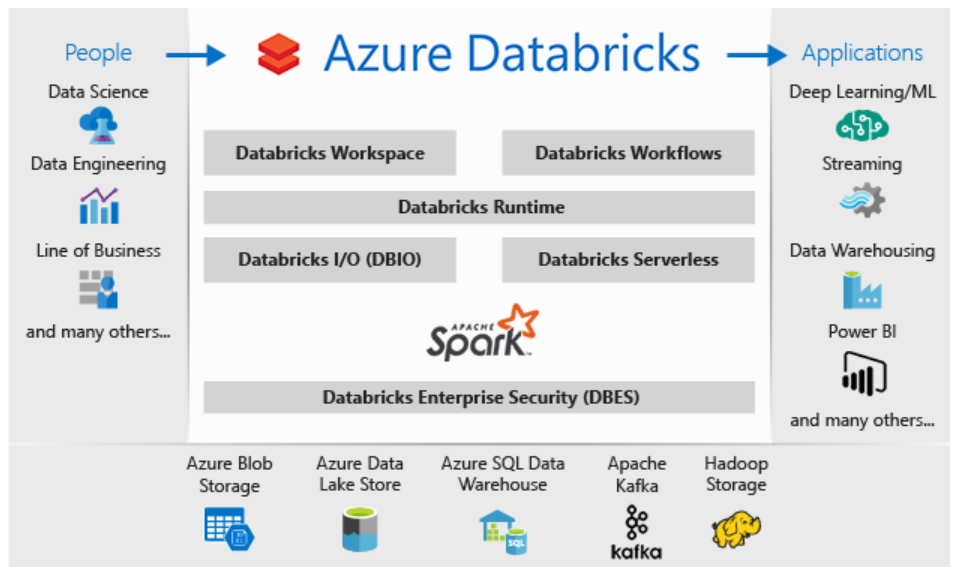In the ever-evolving landscape of artificial intelligence (AI), efficiency is paramount. Organizations striving to harness the full potential of AI are constantly seeking innovative solutions to streamline their workflows, maximize productivity, and drive tangible results. Enter Microsoft Azure Databricks – a powerful platform designed to revolutionize the way AI workflows are optimized and executed. In this comprehensive guide, we’ll explore how Azure Databricks empowers businesses to supercharge their AI initiatives, leveraging cutting-edge technologies and best practices to achieve unparalleled efficiency and success.
Unlocking the Power of Data: Azure Databricks Primer
At the heart of any successful AI endeavor lies data – vast, diverse, and often complex. Azure Databricks serves as the cornerstone for unlocking the power of data, providing a unified analytics platform that seamlessly integrates with Microsoft Azure services. By combining the capabilities of Apache Spark with the scalability and flexibility of the cloud, Azure Databricks empowers organizations to ingest, process, and analyze massive datasets with ease.

Streamlining AI Development: Collaboration and Integration
One of the key strengths of Azure Databricks lies in its ability to streamline the AI development process through seamless collaboration and integration. With built-in support for popular programming languages such as Python, R, and Scala, data scientists and developers can leverage familiar tools and frameworks to build and deploy AI models with unprecedented speed and efficiency. Moreover, Azure Databricks integrates seamlessly with Azure Machine Learning, enabling organizations to leverage the full spectrum of AI capabilities within a unified environment.

Accelerating Model Training and Deployment: Distributed Computing at Scale
In the realm of AI, time is of the essence. Azure Databricks addresses this challenge head-on by offering distributed computing capabilities that allow organizations to train and deploy AI models at scale. By harnessing the power of Apache Spark clusters provisioned on-demand, organizations can significantly reduce the time and resources required for model training, enabling faster iterations and more accurate predictions. Whether it’s image recognition, natural language processing, or predictive analytics, Azure Databricks empowers organizations to tackle complex AI challenges with confidence and agility.

Optimizing Performance: Advanced Analytics and Optimization Techniques
In addition to its robust data processing capabilities, Azure Databricks offers a suite of advanced analytics and optimization techniques designed to maximize performance and efficiency. From automated tuning of Spark configurations to dynamic resource allocation and workload management, Azure Databricks ensures that AI workloads are executed with optimal speed and reliability. Furthermore, Azure Databricks integrates seamlessly with Azure Synapse Analytics, enabling organizations to leverage the power of big data analytics and AI in a unified environment.
Ensuring Security and Compliance: Built-in Governance and Compliance Controls
In today’s data-driven world, security and compliance are non-negotiable. Azure Databricks provides built-in governance and compliance controls that enable organizations to meet the most stringent security requirements. From role-based access control (RBAC) to data encryption and audit logging, Azure Databricks ensures that sensitive data remains protected at all times. Moreover, Azure Databricks is compliant with industry standards such as HIPAA, GDPR, and SOC 2, providing organizations with peace of mind as they embark on their AI journey.

Conclusion: Embracing the Future of AI with Azure Databricks
As organizations continue to navigate the complexities of the digital age, the need for efficient, scalable, and secure AI solutions has never been greater. With Microsoft Azure Databricks, organizations can unlock the full potential of AI, empowering teams to collaborate effectively, accelerate innovation, and drive measurable business outcomes. By optimizing AI workflows with Azure Databricks, organizations can stay ahead of the curve, harnessing the power of data to unlock new opportunities and achieve sustainable growth in an increasingly competitive landscape.
With its comprehensive suite of features, seamless integration with Microsoft Azure services, and unmatched performance and scalability, Azure Databricks is poised to revolutionize the way organizations approach AI. By embracing Azure Databricks, organizations can future-proof their AI initiatives, enabling them to thrive in the digital economy and shape the future of innovation.

Embrace the future of AI with Microsoft Azure Databricks – and unleash the full potential of your data-driven initiatives.
Here are some URLs that users can visit to gain more information on optimizing AI workflows with Microsoft Azure Databricks:
- Microsoft Azure Databricks Documentation: https://docs.microsoft.com/en-us/azure/databricks/
- Azure Databricks Blog: https://databricks.com/blog/category/azure
- Microsoft Azure AI Solutions: https://azure.microsoft.com/en-us/solutions/ai/
- Microsoft Azure Machine Learning Documentation: https://docs.microsoft.com/en-us/azure/machine-learning/
- Microsoft Azure Synapse Analytics Documentation: https://docs.microsoft.com/en-us/azure/synapse-analytics/
- Microsoft AI & Data Tech Community: https://techcommunity.microsoft.com/t5/ai-data/bd-p/AIDataTechCommunity
- Microsoft Learn: AI and Machine Learning Courses: https://learn.microsoft.com/en-us/azure/?WT.mc_id=portal-blog-cxa
- Microsoft AI Research: https://www.microsoft.com/en-us/research/research-area/artificial-intelligence/
- Microsoft Developer Blog: AI & Machine Learning: https://devblogs.microsoft.com/ai/
- Microsoft Azure YouTube Channel: AI and Machine Learning Playlist: https://www.youtube.com/playlist?list=PLLasX02E8BPCNCK8Thcxu-Y-XcBUbhFWC
These resources provide a wealth of information, tutorials, case studies, and updates on leveraging Microsoft Azure Databricks and other AI technologies.




